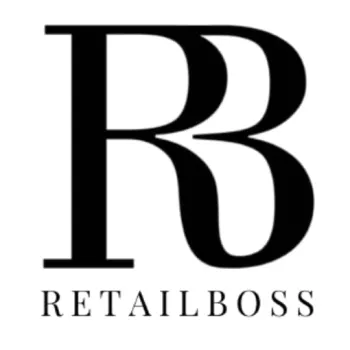The global online luxury goods market stands at a pivotal moment in 2025, with technological innovations and evolving consumer preferences driving transformation across the industry. After weathering a challenging 2024, the sector now balances recovery with adaptation to new market realities, highlighting both resilience and the need for strategic evolution in luxury e-commerce.
Market Recovery and Regional Leadership
Following a 2% decline in 2024, when the personal luxury goods market dropped to $381 billion from its historic high of $387 billion, the luxury sector is showing signs of stabilization in 2025. Industry forecasts project growth ranging from flat to a modest 4% increase this year, signaling a cautious but steady recovery.
The United States continues to dominate the online luxury segment, with projections to generate approximately $21 billion in e-commerce revenue in 2025. This leadership reflects a significant shift in global luxury market dynamics, as the U.S. has overtaken Europe as the largest luxury market overall. American luxury sales are expected to rise by 7% in 2025, making the U.S. a critical growth driver for the industry.
Meanwhile, China faces ongoing economic headwinds that have impacted its luxury market. Despite China’s traditional retail strength, with annual revenues reaching up to $110 billion, Chinese consumer spending on luxury goods is projected to decline by 1% this year. The country’s property crisis and economic slowdown have prompted even affluent Chinese consumers to “trade down” to mid-tier brands.
AI Transformation: The New Competitive Edge
Artificial intelligence has emerged as a transformative force in the luxury market, valued at $1.2 billion in 2024 and expected to exceed $5.6 billion by 2034. The global AI market in luxury is expected to reach $3 billion by 2025 alone, with 78% of luxury firms considering AI a strategic priority for the next three years.
“AI is changing how luxury brands connect with their customers,” notes industry analysis from Vertu. “Instead of showing everyone the same products, AI helps brands offer personalized suggestions based on each shopper’s preferences.”
In 2025, two-thirds of U.S. luxury consumers have already engaged with AI while shopping for fashion online. These implementations span from personalized shopping experiences to predictive analytics and virtual concierge services. In France, one-third of luxury industry professionals use AI to personalize websites, while about a quarter have implemented or plan to introduce chatbots.
The rise of AI-powered hyper-personalization represents a fundamental shift in how luxury brands approach customer engagement. Gucci, for example, grew its revenue by 8% in 2022 using data to personalize products, while Montblanc improved customer satisfaction through AI-driven unique experiences.
Evolving Consumer Demographics and Expectations
A dramatic shift in the luxury customer base is reshaping industry priorities. Consumers under 40 now represent 40% of the luxury market, overtaking historically dominant older demographics. Having grown up with social media, this younger audience navigates digital spaces as naturally as physical ones and demands seamless integration between online and offline experiences.
“By 2025, more luxury items will be sold online than ever before,” reports Resolve Digital. “This is a major shift for an industry that used to rely heavily on in-store experiences. Customers today are looking for the convenience of shopping from their homes, even for high-end products.”
The online portion of personal luxury sales is expected to reach approximately 20% by 2025, with total online luxury sales projected to reach $91 billion globally. This represents a tripling of online luxury sales from their pre-pandemic levels, highlighting the accelerated digital transformation catalyzed by COVID-19.
Balancing Digital Convenience with Luxury Exclusivity
A significant challenge for luxury e-commerce in 2025 is maintaining brand exclusivity while expanding digital accessibility. “Luxury brands often rely on their exclusivity and premium appeal. However, selling online can sometimes dilute this image,” notes industry analysis from Resolve Digital.
The post-pandemic marketplace has stabilized but remains complex, with luxury brands striving to satisfy both in-store customers and online shoppers simultaneously. Venture Stream observes that “the meteoric rise of online luxury sales during the pandemic has slowed, and luxury brands are now faced with the challenge of appeasing both the in-store customer and bringing the luxury shopping experience online for the e-commerce converts.”
This balancing act has prompted innovations in digital luxury experiences, including augmented reality shopping tools and virtual fitting rooms. As brands adapt to this new reality, they’re reimagining the luxury customer journey to preserve exclusivity while embracing digital accessibility.
Emerging Trends: Sustainability and Secondhand Luxury
Sustainability has become a non-negotiable priority for luxury consumers in 2025. “In 2025, consumers may prioritize sustainability and ethical practices when choosing luxury brands,” says retail expert Jeanel Alvarado. “Customers increasingly demand eco-friendly packaging, product sourcing transparency, and ethical labor practices.”
The secondhand luxury market has emerged as a significant segment, valued at $34.39 billion in 2023 and projected to reach $60.55 billion by 2029. This growth is driven by diminishing stigma around pre-owned products, increasing demand from millennials and Gen Z for affordable luxury goods, and strategic partnerships between luxury brands and resale platforms.
Conclusion: Navigating the Future of Luxury E-Commerce
As the online luxury goods market continues to evolve in 2025, success will depend on brands’ ability to balance tradition with innovation. The integration of AI technology, adaptation to changing consumer demographics, and commitment to sustainability represent the new pillars of luxury e-commerce.
Industry leaders suggest that “in 2025 and beyond, big luxury will have to enhance its strategic resilience and adaptability to remain relevant and future proof.” This includes reconnecting with authentic luxury values, focusing on useful and wearable fashion, and leveraging technology to enhance rather than replace the human elements that define true luxury.

















